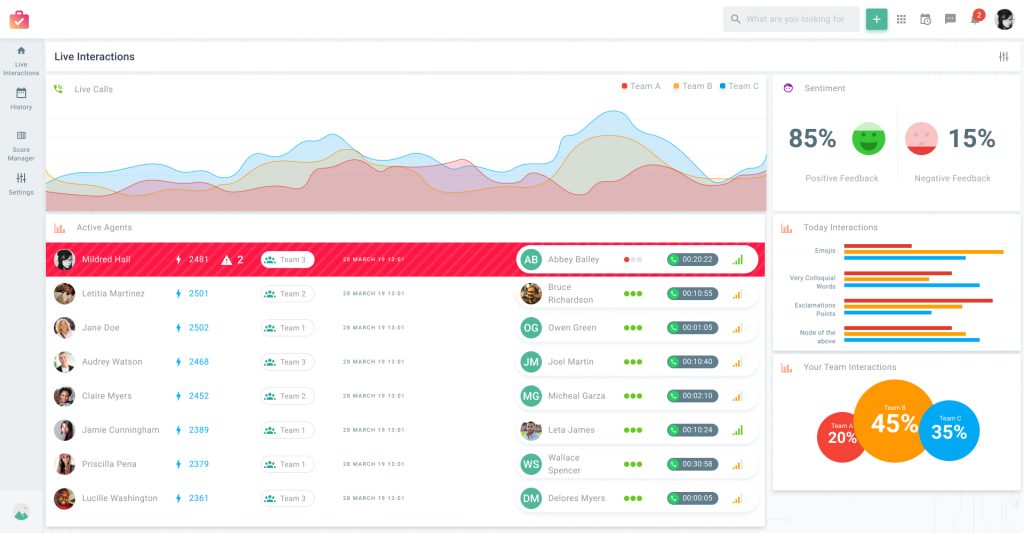With the global disruption caused by Coronavirus, there comes new challenges for customer service and support teams across many industries.
In times of crisis or when facing higher volumes of traffic than usual, it’s important for contact center businesses to stay focused on best practices and reinforcing the capabilities of your team. When experiencing this increase in demand, one way businesses can ensure their agents are able to handle increased call volumes smoothly is by leveraging artificial intelligence (AI) to help scale support.
Traditionally, customer satisfaction (CSAT) has been regarded as the ultimate measure of customer loyalty. However, as in times of crisis and increased demand, the measure for customer’s loyalty and satisfaction is moved from personal experience, and shifted almost entirely to the speed of resolution.
Luckily, AI has evolved in recent years to be adaptable and intuitive to customer needs. This means you don’t have to compromise call volume with quality interactions, but can have the best of both worlds to succeed in times of crisis.
The cost of customer loyalty
Many leading brands have a customer engagement strategy to generate loyalty through a self-service strategy, and prioritizes faster resolution. Reducing time spent on interactions, with self-service such as FAQ automation is the biggest opportunity for brands to reduce costs. Gartner has found that when compared to live channels such as phone email and live chat, overall, a low-effort interaction costs 37 percent less than a high-effort interaction.
Here is a list of AI features your business can adapt to capitalize on automated growth:
IVR
For customer inquiries made through a call, an interactive voice response (IVR) system equipped with AI can recognize a customer’s intent, provide answers and understand requests that aren’t a part of a predetermined menu of options. Hybrid IVR with AI can also intelligently route calls to reduce handling time or give callers the option of receiving either a callback, switch to live chat, or SMS message from the next available agent, rather than wait in a queue.
IVR is also a safe and secure method of payment, meaning that contact center agents can take orders over the phone safely with AI.


AI Chat Bots
Similarly, AI-based chatbots equipped with machine learning for sentiment analysis can complete more complex tasks to reduce escalation to a live agent. These AI platforms let you focus on building a bot experience that works for your user flow without worrying about the underlying capabilities or infrastructure.
Conversational AI can complete tasks, including paying a bill, completing orders, and providing instructions to customers without channel switching. With the adoption of voice assistants set to triple over the next few years, to 8 billion digital voice assistants in use by 2023, companies should consider how they can build AI chatbots into their communication strategies.
Data Analysis
Understanding your customer’s preferences is paramount for successful outbound interactions. Sales AI features can queue up interactions to be scheduled at your customers time preferences (after work hours for example), and on their preferred communication channel. This routing technique can also work for inbound interactions with prequalifying IVR questions, helping to route customers to the agents with the best skill set for their tickets.
Data insights can also prove invaluable to managers when understanding how to get the best out of their teams. Knowing how to incentivize and when to push agents, can go a long way in understanding and making the most out of your contact center.
API Syncing
Modern API feeds can identify, sort, and process inbound data, which are then logged automatically in your CRM. Briefed with the full context of the conversation, Live Agents can resolve tickets quicker and give a greater personalized service.
Not only can API syncing provide a greater service, by automatically logging all transactions and conversation history, but also vastly cut down agent’s wrap up time, freeing them up to move on to the next caller even quicker without being bogged down by admin.


Knowing Your Audience Through Omni
Customers expect businesses to interact with them on their terms at any time, and on any channel — whether it’s SMS, voice, social, or email. However, engaging across every channel all the time for every individual doesn’t work either.
Research has shown there are best practices for engaging with customers based on the content and urgency of a message. It’s critical to honor your customer’s preferences for when and how they wish to receive alerts, notifications, and messages so that their experience with your company remains positive. With an Omni strategy, your customer has a variety of options for how to contact you, and with AI and automation features, your agent can always be placed with a live person on a platform of their choice for a quicker and more personalized service.
The value of faster resolution times has a heightened effect during challenging times of disruption for businesses and customers alike. Never has it been more important for businesses to provide reassuring and speedy customer service to their customers.
By leveraging the power of AI systems and features, Contact Centers can drive efficiency to successfully meet the peaks and troughs of traffic and ultimately earn the loyalty of their customers.
Want to learn more about leveraging AI in the contact center? Find more information at our AI page or email: hellous@connex.ai and speak to one of our technicians today.
